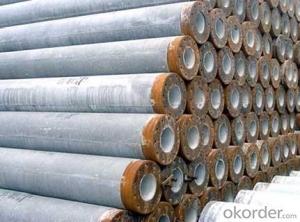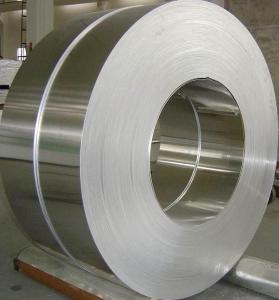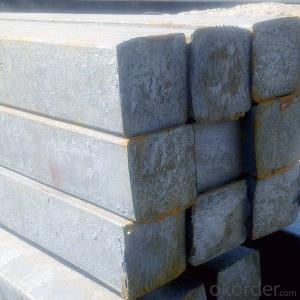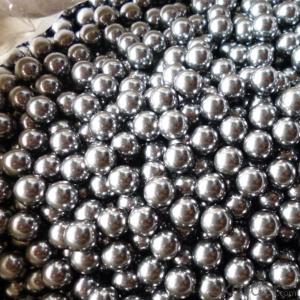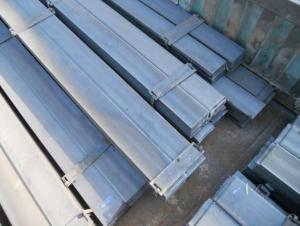Bamboo Pile
- Loading Port:
- China Main Port
- Payment Terms:
- TT OR LC
- Min Order Qty:
- -
- Supply Capability:
- -
OKorder Service Pledge
Quality Product, Order Online Tracking, Timely Delivery
OKorder Financial Service
Credit Rating, Credit Services, Credit Purchasing
You Might Also Like
We mainly engaged in manufacturing PHC concrete piles with diameters of Φ600~Φ1400 for wharf. Every year, the company produces various types of concrete piles of over 150,000 meters with single-section pile of 41meter long and annual gross output value up to RMB 600 million.
With years’ manufacturing experience of concrete piles and a great number of excellent technological and management talents, the company persists in technical innovation and research of new products. The large-diameter PHC concrete piles with merits such as good bending strength, large bearing capacity, fine resistance against the external force and so forth have been the preferential choice of structural materials for foundation engineering construction such as large ports, wharfs, shipyard, huge bridges, high-rise buildings, heavy factories, high-speed railway, etc.
The company holds the operation philosophy of “honest, practical and harmonious for win-win” and persists in the quality guideline of “constant improvement with prohibition of non-conforming products into construction site” to provide you sincerely with superior products and service.
- Q:Is galvanized steel plate or iron plate?
- From the point of view of metal science, there is a misunderstanding here. If you want to be familiar with the metal science, you will not ask this question. This is also a misunderstanding that many people coexist.
- Q:Can steel rebars be used in the construction of sports stadiums or arenas?
- Certainly, the utilization of steel rebars in the construction of sports stadiums or arenas is a viable option. These rebars are frequently employed as reinforcement in concrete structures due to their impressive tensile strength and durability. Their suitability for extensive projects, such as sports stadiums, is evident. By providing extra support and stability, the rebars enable the concrete to withstand the immense loads and forces that occur during events in stadiums and arenas. Moreover, the versatility of steel rebars allows for effortless shaping and bending to match the specific design requirements and needs of the structure, making them an adaptable choice in construction endeavors.
- Q:How does the insulation coating affect the performance of silicon steel laminations?
- The insulation coating plays a crucial role in enhancing the performance of silicon steel laminations. Firstly, it provides electrical insulation between adjacent laminations, preventing the occurrence of eddy currents. Eddy currents are induced in the laminations when exposed to alternating magnetic fields, resulting in energy losses in the form of heat. By insulating the laminations, the insulation coating effectively reduces these eddy current losses, improving the overall efficiency of the laminations. Secondly, the insulation coating also helps in reducing the core losses in the laminations. Core losses occur due to hysteresis and magnetic domain rotation within the material. The insulation coating acts as a barrier, reducing the magnetic interaction between adjacent laminations and minimizing the core losses. Furthermore, the insulation coating also improves the mechanical properties of the laminations. It provides protection against corrosion, oxidation, and moisture, thereby extending the lifespan of the laminations. Additionally, the insulation coating helps in reducing noise and vibrations during the operation of electrical machines, leading to quieter and smoother performance. Overall, the insulation coating plays a critical role in enhancing the performance of silicon steel laminations by reducing eddy current losses, core losses, and improving mechanical properties. It contributes to the overall efficiency, durability, and reliability of electrical machines that utilize silicon steel laminations.
- Q:What are the different types of steel wire rod surface defect quantification methods?
- There are several different methods used to quantify surface defects on steel wire rods. These include visual inspection, optical microscopy, image analysis, and non-destructive testing techniques such as ultrasonic testing and magnetic particle inspection. Each method has its own advantages and limitations, but they all aim to accurately measure and classify surface defects on steel wire rods to ensure quality control and compliance with industry standards.
- Q:How is steel wire rod used in the manufacturing of reinforcement bars?
- Steel wire rod is used in the manufacturing of reinforcement bars by being hot rolled into a continuous rod shape. This rod is then further processed and stretched to the desired diameter and strength, which is then cut into specific lengths to create reinforcement bars. These bars are commonly used in construction projects to provide added strength and stability to concrete structures such as buildings, bridges, and roads.
- Q:How does the recycling process of silicon steel differ from regular steel?
- The recycling process for silicon steel varies from that of regular steel because of the inclusion of silicon in silicon steel. Silicon steel, also called electrical steel, is a type of steel alloy created specifically to have low electrical resistance, making it suitable for use in transformers, motors, and other electrical equipment. When recycling silicon steel, the first step is to gather and sort the scrap. This scrap can come from different sources, such as discarded transformers, motors, or manufacturing waste. Next, the scrap is processed to eliminate any materials that aren't silicon steel, like insulation or coatings, through mechanical or chemical methods. After sorting and cleaning, the scrap is typically shredded into smaller pieces for easier handling during further processing. The shredded silicon steel scrap is then exposed to high heat in a furnace, melting it down. During this melting process, various refining techniques are employed to remove impurities or contaminants. The molten silicon steel is then poured into molds to create new products, including sheets, coils, or other components. These products are utilized in the production of electrical equipment or other applications that require the specific properties of silicon steel. In contrast, recycling regular steel involves collecting and sorting steel scrap from various sources, such as construction sites, demolished buildings, or manufacturing waste. The scrap is then processed to remove non-steel materials like plastic, wood, or rubber, through mechanical or magnetic separation. Once the initial sorting and cleaning are complete, the steel scrap is usually shredded or compacted to aid in further processing. The shredded or compacted steel scrap is then melted in a furnace, where impurities are removed through refining techniques, including the addition of fluxes to absorb or separate unwanted elements. The molten steel is finally poured into molds to create new products, such as beams, bars, or sheets. These products find applications in diverse industries, including construction, automotive, or manufacturing. In conclusion, the recycling process for silicon steel differs from that of regular steel due to the presence of silicon. The silicon steel scrap undergoes specific steps to eliminate impurities and contaminants, and the resulting molten silicon steel is cast into molds to create new products with low electrical resistance. Recycling regular steel follows a similar process but does not involve removing silicon or possess the same electrical properties.
- Q:What are the common materials used to make steel squares?
- Steel squares are typically made using a variety of common materials. The main material used to make steel squares is, of course, steel. Steel is a widely used material due to its high strength, durability, and resistance to corrosion. It provides the necessary stability and hardness required for accurate measurements and precise marking. In addition to steel, other materials are also commonly used in the production of steel squares. One such material is brass. Brass is often used for the face of the square, as it is softer and less likely to damage delicate surfaces when used for marking or scribing. Another material that can be found in steel squares is wood. Wooden handles are often attached to steel squares to provide a comfortable grip and ease of use. Wood is chosen for its natural warmth, durability, and ability to absorb vibrations, ensuring a more stable and accurate measurement. Overall, steel squares are typically made using a combination of steel, brass, and wood. These materials work together to create a reliable and versatile tool that is commonly used in various industries such as carpentry, metalworking, and engineering.
- Q:What is the cost of stainless steel angles?
- The cost of stainless steel angles can vary depending on factors such as size, thickness, and quantity. It is recommended to check with suppliers or conduct market research to get accurate and up-to-date pricing information.
- Q:Can steel round bars be used in the production of sporting goods?
- Sporting goods can indeed utilize steel round bars. Steel, a versatile material renowned for its strength and durability, proves fitting for a wide spectrum of applications within the sporting goods industry. To illustrate, steel round bars can be employed to fabricate various components, including shafts, handles, frames, and supports for sporting equipment such as golf clubs, hockey sticks, weightlifting bars, and exercise machines. The robust tensile strength of steel ensures that these components can withstand the rigorous forces and pressures exerted during sports activities, thus affording stability and longevity to the resultant products. Additionally, steel round bars can be effortlessly machined, welded, and molded into different shapes and sizes to meet the particular requirements of each sporting good. Furthermore, steel's ability to resist corrosion renders it an ideal choice for outdoor sporting equipment that is subjected to diverse weather conditions. In summary, steel round bars are an immensely popular option in the production of sporting goods owing to their strength, durability, versatility, and capacity to endure the demands of various sports.
- Q:What are the different grades of steel coils?
- There are various grades of steel coils available, including but not limited to, low carbon steel, high carbon steel, stainless steel, and alloy steel. These different grades offer varying levels of strength, corrosion resistance, and other mechanical properties, allowing them to be used for various applications in industries such as automotive, construction, and manufacturing.
1. Manufacturer Overview |
|
|---|---|
| Location | |
| Year Established | |
| Annual Output Value | |
| Main Markets | |
| Company Certifications | |
2. Manufacturer Certificates |
|
|---|---|
| a) Certification Name | |
| Range | |
| Reference | |
| Validity Period | |
3. Manufacturer Capability |
|
|---|---|
| a)Trade Capacity | |
| Nearest Port | |
| Export Percentage | |
| No.of Employees in Trade Department | |
| Language Spoken: | |
| b)Factory Information | |
| Factory Size: | |
| No. of Production Lines | |
| Contract Manufacturing | |
| Product Price Range | |
Send your message to us
Bamboo Pile
- Loading Port:
- China Main Port
- Payment Terms:
- TT OR LC
- Min Order Qty:
- -
- Supply Capability:
- -
OKorder Service Pledge
Quality Product, Order Online Tracking, Timely Delivery
OKorder Financial Service
Credit Rating, Credit Services, Credit Purchasing
Similar products
New products
Hot products
Related keywords
